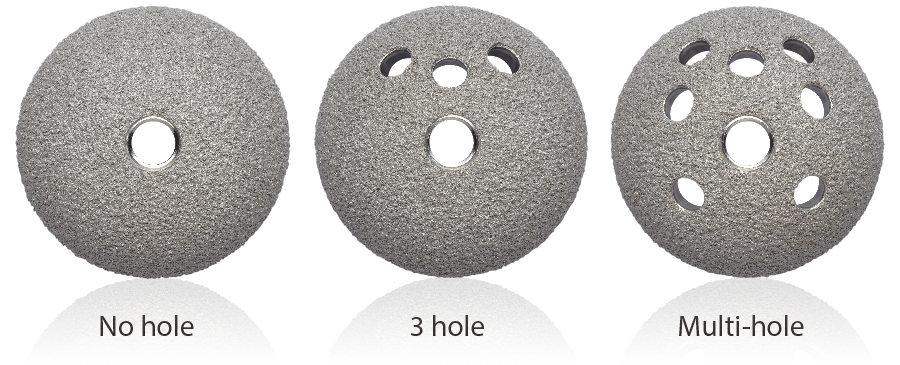 For orthopedics, the Legend Acetabular Shell represents a revolutionary step forward. It provides a comprehensive solution for patients and orthopedic surgeons because of its adaptability, precision 3D coating, ingrowth surface perfection, titanium strength, and secure locking mechanism.
For orthopedics, the Legend Acetabular Shell represents a revolutionary step forward. It provides a comprehensive solution for patients and orthopedic surgeons because of its adaptability, precision 3D coating, ingrowth surface perfection, titanium strength, and secure locking mechanism.
What is Legend Acetabular Shell
When a patient needs a new hip, the surgeon will insert a metal and ceramic cup called an acetabular shell into the patient’s hip.
This artificial hip component replaces the acetabulum, the socket-shaped section of the hip bone, when it is injured or infected. The acetabular shell may be made completely of metal, plastic, or a hybrid.
Benefits of Legend Acetabular Shell
-> Acetabular shells are made to be biocompatible, so they don’t cause an immune response and are easily tolerated by the body.
-> These shells are durable enough to survive daily use.
-> Surgeons have a wide range of options in size and shape, allowing for a more customized fit and enhanced hip joint performance.
-> Acetabular shells can be tailored to each patient due to their adaptability to various liners (often polyethylene).
-> Acetabular shells are designed to offer prosthetic hip joint support and prevent dislocation.
Features like screw holes or porous surfaces are commonly incorporated into their designs to facilitate stable attachment within the patient’s pelvic bone.
If the acetabular shell is still in good form, it can be retained in circumstances where a hip replacement may need to be altered or replaced.
Disadvantages of Acetabular shells
Undoubtedly, there exist certain drawbacks that are commonly related to the utilization of acetabular shells in orthopedic treatments.
Debris release
Acetabular shells are materials that can wear down over time, just like anything else. Revision surgery may be necessary if this causes an inflammatory response in the body known as osteolysis.
Chance of Infection
Acetabular shells have a chance of infection like any other piece of surgery. It may be necessary to remove the implant if it develops an infection around the acetabular shell.
Loss of stability and pain
It can be caused by the acetabular shell becoming loose over time, necessitating a second operation to either re-anchor or replace the shell.
Cause allergic reactions
A restricted range of motion in the hip joint is a potential side effect of hip replacement surgery that may limit a patient’s participation in particular activities.
It is possible, though uncommon, for patients to have an allergic reaction to the acetabular shell’s components.
Chance of hip dislocation
Particularly in the immediate postoperative period, even though acetabular shells are intended to stabilize the hip joint. Patients may need to take extraordinary measures to lower their vulnerability.
More chances of a break or fracture
The acetabular shell or its components may fracture or rupture on extremely rare occasions, necessitating surgical repair.
Highly Cost
Depending on their insurance and financial condition, some patients may find the high expense of hip replacement surgery (which often involves the use of acetabular shells) to be a detriment.
Implications During Surgery
Blood loss, nerve injury, and vascular injury are all possible during surgery, as are other consequences.
The vast majority of hip replacement procedures are successful, and patients receive significant improvements in their quality of life despite these drawbacks being potential concerns linked with acetabular shells.
Hip replacement surgery is a major surgical procedure that requires careful evaluation of the patient’s medical history, anatomy, and lifestyle before deciding on the specific implant components.
Important in Orthopedics
There are many reasons why the acetabular shell is so important in orthopedics.
Restoring Function
It is essential in helping patients with hip arthritis, hip trauma, or other hip joint diseases recover complete hip function.
Reducing Pain
For relief of pain, surgeons will remove the damaged acetabulum and replace it with an acetabular shell and an artificial hip joint.
Enhancing Quality of Life
Resuming regular activities and regaining independence are only two of the many ways in which acetabular shell-based total hip replacement surgery can improve the quality of life for a patient.
Better durability
The life span of a hip replacement is helped further by the fact that the acetabular shell lasts a long time without breaking down.
Easy Customization
The capacity to customize the treatment to each patient’s unique anatomy is made possible by the wide range of sizes and styles now at the surgeon’s disposal.
Wrapping It Up
Keep in mind that the state of health care and its vocabulary is constantly changing. It is always wise to speak with a healthcare expert for the most up-to-date and detailed information regarding medical equipment and treatments.

